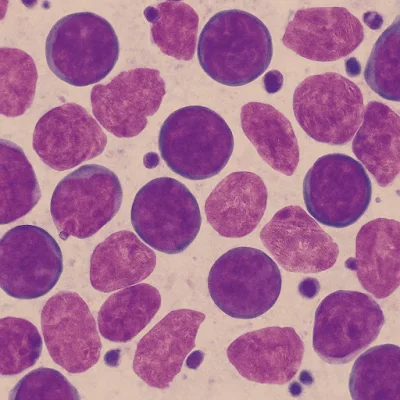🐾 Dog Lymphoma: Symptoms and Treatment Guide 🐾
🔍 What is Dog Lymphoma?
Dog lymphoma is a malignant cancer caused by the abnormal proliferation of lymphocytes, a type of immune cell. It primarily affects the lymphatic system, which is a network throughout the body similar to blood vessels, allowing lymphoma to spread quickly.
The most common form in dogs is multicentric lymphoma, where multiple lymph nodes become enlarged.
⚠️ Early Symptoms to Watch for
- Lymph Node Enlargement: If you feel soft or firm lumps under the skin, especially in the neck, armpits, groin, or behind the knees, it could be a sign of lymphoma.
- Decreased Energy & Activity: If your dog suddenly loses interest in walks or playtime, it might not just be old age.
- Loss of Appetite & Weight Loss: Refusing food or experiencing weight loss even with normal eating habits could be a red flag.
- Breathing Issues or Coughing: Enlarged lymph nodes near the chest may compress the airways, causing difficulty in breathing or dry coughing.
🏥 How is Lymphoma Diagnosed?
The symptoms listed above might be due to infections, inflammation, or other types of tumors. Therefore, it's important to seek a proper diagnosis from a veterinarian.
The vet will likely perform fine needle aspiration (FNA) to examine lymph node cells for cancer. Further tests like blood tests, X-rays, and ultrasounds may be done to determine the stage of lymphoma and whether it has spread.
💉 Treatment for Dog Lymphoma
Lymphoma can be managed effectively when detected early. The standard treatment is chemotherapy, which targets the fast-growing cancer cells.
The most widely used protocol for treating lymphoma in dogs is the CHOP protocol, which involves a combination of the following drugs:
- Cyclophosphamide
- Doxorubicin (Adriamycin)
- Vincristine
- Prednisone
These drugs work together to destroy lymphoma cells and reduce their growth. The treatment plan involves regular doses of chemotherapy, either through injections or oral medication.
Note: Regular check-ups after treatment are crucial to monitor for any signs of recurrence and to maintain your dog's quality of life.







